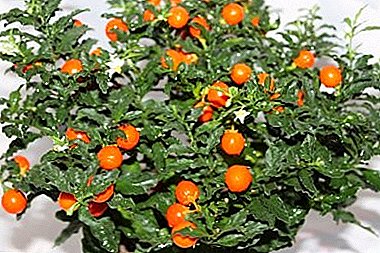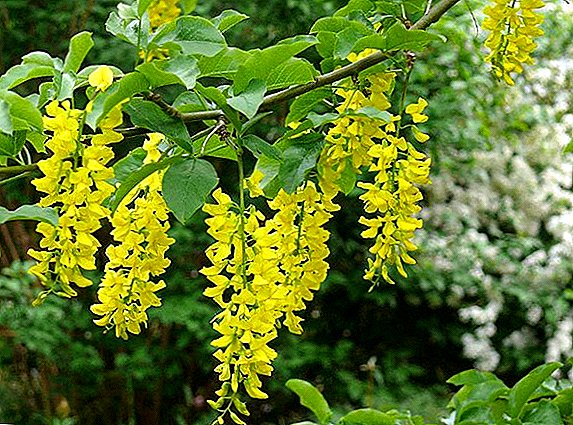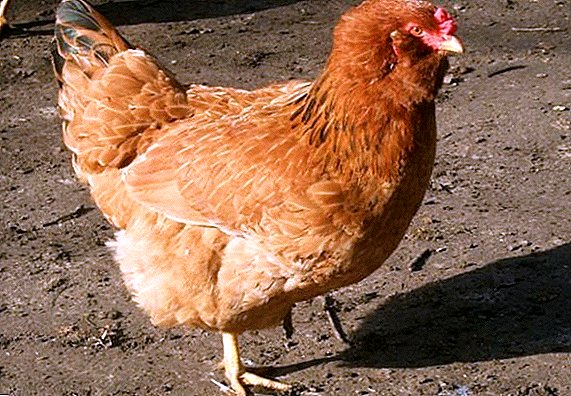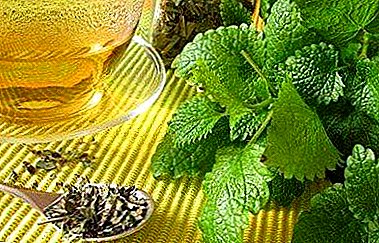
Nightshade, or Solanum in Latin, - ornamental dwarf shrub.
It can often be found on sale.
general description
The indoor flower looks elegant and festive thanks to its round fruits - berries. They change color from green, then orange to red. After ripening, the fruits contain many seeds, by which they are excellent multiply.
The leaves of the plant are bright green, lobed.
Flowers usually in inflorescences, the correct form.
A photo
You can get acquainted with the “Red” nightshade from the following photos:



Home care
 Nightshade is considered an annual plant, but this is not the case. You need to know some rules of care that will help the bush to be always green and beautiful.
Nightshade is considered an annual plant, but this is not the case. You need to know some rules of care that will help the bush to be always green and beautiful.
Care after purchase
Plants in flower shops are usually found in cramped pots with transporting soil.
This substrate contains a small amount of nutrients, but before selling it a little feed.
Immediately after the purchase is not necessary to transplant the nightshade. Let the plant get used to the external conditions: light, humidity.
After 2 weeks you can transplant shrubs.
Pruning
To the bush was a beautiful shape and pleasing to the eye, it is periodically cut.
Pruning do after ripening fruits, shortening the length of the shoots by one third.
The bush pomp is achieved by pinching shoots before the appearance of buds and flowers.
Watering
During the period of enhanced growth, the plant is well watered as soon as the upper crust of the soil begins to dry. During the rest period, water moderately, keeping the air in the room sufficiently humid.
ATTENTION! In no case should soil be allowed to dry out.
Nightshade especially loves frequent spraying. It is carried out with warm distilled water from a spray bottle.
Landing
Plant a young plant in a small pot.
The soil is prepared from a mixture of peat, turf, leaf soil and sand. In the ratio of the substrate should be dominated by humus, and the remaining parts are equal.
Transfer
 A transplant is made once a year at the end of February or the beginning of March.
A transplant is made once a year at the end of February or the beginning of March.
In a free pot, the plant will lose its appearance and decorative form.
Do not completely change the soil. Earthen room before transplanting should be wet.
It is advisable to transplant the roots gently so as not to damage.
If the bottom of the pot has accumulated a lot of roots in a circle, then the plant has spent a long time in a greenhouse.
Excess roots should be removed, since the main nutrition of the plant will occur due to the vertical roots.
The substrate must be nutritious, contain a sufficient amount of humus and sand. At the very bottom of the pot pour a layer of expanded clay or broken brick in order to absorb excess moisture.
REFERENCE! When planting do not allow the root of the neck. So ornamental shrubs will not rot.
Watering is carried out immediately after transplantation, and feeding - after 2 weeks.
Top dressing
It is no secret that all the beauty of the nightshade is in its fruits. They spectacularly they look, because at different stages of their maturation they have different colors: green, orange and red.
For good flowering and fruiting need to produce plant nutrition.
In the spring and summer they apply fertilizer for solanaceous vegetable crops no more than once a week. During the growing season, you can use fertilizers for flowering plants.
It is often not necessary to feed the nightshade in winter, once a month will be quite enough.
Growing from seed at home
 The seeds of the ornamental nightshade are planted in the spring at an air temperature of about 20 degrees in a moist substrate, not buried, a little sanding. It is advisable to cover with glass jars.
The seeds of the ornamental nightshade are planted in the spring at an air temperature of about 20 degrees in a moist substrate, not buried, a little sanding. It is advisable to cover with glass jars.
Shoots begin to appear 2 weeks after planting.
Then a double picking of the root system of the young plant is carried out and planted into the ground and pinch for better growth and branching of the shoots.
Breeding
It is also possible to propagate by cutting. Cut the shoots are planted in the soil for rooting, and then transplanted into specially prepared pots.
Temperature
Room temperature is perfect for growing nightshade. Optimal indoors in the summer will be 25 degrees, and in winter - not less than 12 degrees. In the dormant period the plant becomes very sensitive to drafts, but occasionally airing the room is still necessary.
Lighting
Nightshade loves bright lighting. It is necessary to choose a window with the greatest illumination where a sufficient amount of light falls. Nightshade not scary direct sunlight, so you can safely take the plant to the street. In especially hot hours it is worth rearranging in the shade to prevent burns on the leaves.
Benefit and harm
Poisonous or not?
IMPORTANT! If the house has small children or pets, then you should refrain from buying shrubs.
 Nightshade is a poisonous plant.
Nightshade is a poisonous plant.
Berries of this species unsuitable for eating.
Medicinal properties and contraindications
Dried ornamental grapes are used to treat sore throats. To do this, one tablespoon of fruit is poured with a glass of boiling water, infused and used for gargling.
Drink infusion is not recommended.
Diseases and pests
The nightshade is usually subject to attacks by insects such as the aphid, spider mite and whitefly.
At defeat spider mite the plant is shrouded in a thin spider web with black specks, the leaves curl and turn yellow.
White fly easy enough to detect. The leaves will be white bloom. If you come closer to the flower, then a white flock of insects will immediately wave into the air.
At defeat aphids, the leaves start to curl and lose the brightness of the color, and then completely turn yellow and fall off.
Nightshade is sick if the conditions of care are violated:
- the plant does not bear fruit or little fruit: the room is poorly ventilated, requires fresh air or manual pollination with a brush;
- leaves turn yellow and fall: too humid air and high temperature in the room.

Conclusion
In order to grow at home a beautifully shaped shrub with multicolored berries, you need to attach some conditions.
The plant in this case will make the decor of your home a cozy and festive atmosphere.












